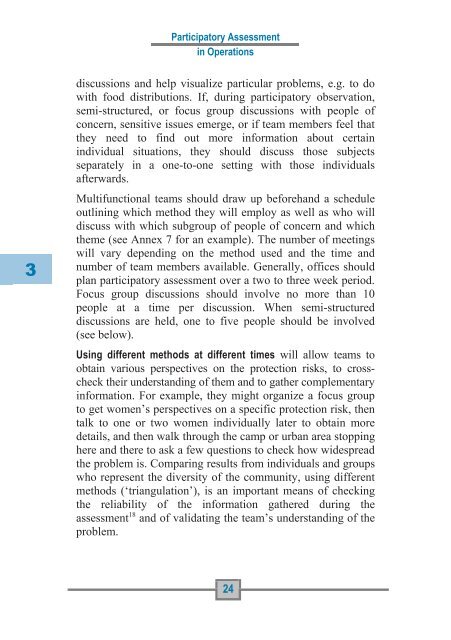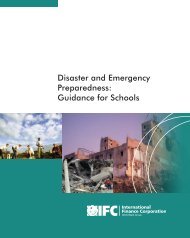Participatory Assessment - Refworld
Participatory Assessment - Refworld
Participatory Assessment - Refworld
- No tags were found...
You also want an ePaper? Increase the reach of your titles
YUMPU automatically turns print PDFs into web optimized ePapers that Google loves.
in Operations3discussions and help visualize particular problems, e.g. to dowith food distributions. If, during participatory observation,semi-structured, or focus group discussions with people ofconcern, sensitive issues emerge, or if team members feel thatthey need to find out more information about certainindividual situations, they should discuss those subjectsseparately in a one-to-one setting with those individualsafterwards.Multifunctional teams should draw up beforehand a scheduleoutlining which method they will employ as well as who willdiscuss with which subgroup of people of concern and whichtheme (see Annex 7 for an example). The number of meetingswill vary depending on the method used and the time andnumber of team members available. Generally, offices shouldplan participatory assessment over a two to three week period.Focus group discussions should involve no more than 10people at a time per discussion. When semi-structureddiscussions are held, one to five people should be involved(see below).Using different methods at different times will allow teams toobtain various perspectives on the protection risks, to crosschecktheir understanding of them and to gather complementaryinformation. For example, they might organize a focus groupto get women’s perspectives on a specific protection risk, thentalk to one or two women individually later to obtain moredetails, and then walk through the camp or urban area stoppinghere and there to ask a few questions to check how widespreadthe problem is. Comparing results from individuals and groupswho represent the diversity of the community, using differentmethods (‘triangulation’), is an important means of checkingthe reliability of the information gathered during theassessment 18 and of validating the team’s understanding of theproblem.
















